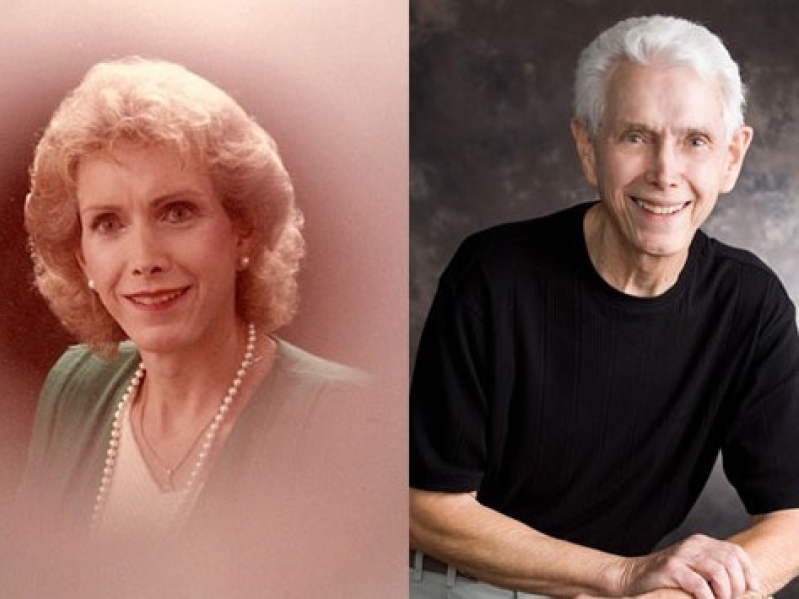
Former transgender man Walt Heyer has warned that former Olympian Bruce Jenner, who now goes by the name Caitlyn, and others like him may later regret their decision to transition to another gender. From Heyer's personal experience, gender reassignment surgery "fixed nothing."
In a recent interview with Carol Costello of CNN, Heyer elaborated on why Jenner's transition to a woman could be the biggest mistake of his life. Heyer himself lived life as a woman for eight years before going back to being a man.
"I just know from the e-mails that I get to my Web site and from my own personal experience, this doesn't always last," Heyer said. "It's sort of like, you know, going down to the bar and you're having a good time and you drink it up good and then, you know, you wake up with a hangover."
Costello then asked Heyer to elaborate on his personal experience being transgender.
"I started out as a transgender child at a young age," Heyer said. "And went through life struggling with gender identity disorder and, you know, got married, had children. My life really has a lot of mirrors that reflect the same life as Jenner is having."
Heyer added that he decided to transition to a woman at 42 years old after going through a divorce. However, he realized that "after living that way for years and studying psychology that no one actually changes gender."
"The surgeons can make it look like you changed genders but the fact of the matter is, it's all cosmetic surgery," Heyer said. "There's really no actual gender change."
Heyer acknowledged that like Jenner, he initially felt free after transitioning to a woman. However, he felt that times have not changed much, citing the high suicide attempt rate within that segment of society.
"I do think that when we look at regret, one of the things that we don't talk about much is the fact that 41 percent of transgenders will attempt suicide and those 41 percent should actually be included in the ones who regret changing genders," Heyer said. "People who are happy about what they do won't attempt suicide. 41 percent of them do."
Even though Heyer does not personally know Jenner, he observed in his own life that the "state of euphoria and excitement" eventually died down.
"It was my own realization that I had not really changed genders and when all of the adoration and all the excitement had worn off after eight years and you look back and start looking at the old pictures and realize, wow, this is really not all that good," Heyer said. "And, you know, you just come to -- you have to come to that place on your own."
Heyer contended that he made the decision to go back into manhood without coercion from others.
"I don't think things that people say really had any effect on me," Heyer wrote. "People said some pretty horrible things and people still say horrible things about me because I went back. So you know, you have to kind of be pretty thick skinned and not worry about what other people say."
Back in April, Heyer wrote an essay in the Public Discourse detailing his life of being transgender. He surmised that there was a "dark and troubling history" within the current "transgender movement."
"The beginnings of the transgender movement have gotten lost today in the push for transgender rights, acceptance, and tolerance," Heyer wrote. "If more people were aware of the dark and troubled history of sex-reassignment surgery, perhaps we wouldn't be so quick to push people toward it."
Heyer reported that the origins of the transgender movement started with three men who he described as "pedophilia activists."
"The story starts with the infamous Dr. Alfred Kinsey, a biologist and sexologist whose legacy endures today," Heyer wrote. "Kinsey believed that all sex acts were legitimate-including pedophilia, bestiality, sadomasochism, incest, adultery, prostitution, and group sex. He authorized despicable experiments on infants and toddlers to gather information to justify his view that children of any age enjoyed having sex."
According to Heyer, Kinsey then turned to "transsexualism" after he was presented a case of "an effeminate boy who wanted to become a girl." He worked with endocrinologist Dr. Harry Benjamin on how to deal with transvestites, or "men who dressed as women."
"Kinsey and Benjamin saw this as an opportunity to change a transvestite physically, way beyond dress and make-up," Heyer wrote. "Kinsey and Benjamin became professional collaborators in the first case of what Benjamin would later call 'transsexualism.'"
Heyer added that although psychiatric doctors couldn't figure out a consensus on "the appropriateness of feminizing surgery," Benjamin "began offering female hormone therapy to the boy." While the fate of that boy remains unknown, he looked at the story of the Reimer twins, who were under the car of psychologist Dr. John Money, the other co-founder of the transgender movement.
"Without any medical justification, Money launched into an experiment to make a name for himself and advance his theories about gender, no matter what the consequences to the child," Heyer wrote of Canadian boy David Reimer, who had a botched circumcision when he was 2 years old. "Money told the distraught parents that the best way to assure David's happiness was to surgically change his genitalia from male to female and raise him as a girl. As many parents do, the Reimers followed their doctor's orders, and David was replaced with Brenda."
However, Heyer reported that Reimer's parents eventually Reimer told the truth of his gender reassignment surgery; he then underwent surgery at 14 years old to live as a boy again. Reimer and his twin brother then highlighted the sexual abuse they endured in Money's office in 2000; both men died by suicide several years later.
"The boys told how Dr. Money took naked photos of them when they were just seven years old. But pictures were not enough for Money," Heyer wrote. "The pedophilic doctor also forced the boys to engage in incestuous sexual activities with each other."
Overall, Heyer argued that undergoing surgery and using hormones to treat "gender dysphoria" can have a harmful effect and lead to regret.
"Transgender clients who regret having taken this path are often full of shame and remorse," Heyer wrote. "Those who regret their decision have few places to turn in a world of pro-transgender activism. For me, it took years to muster the courage to stand up and speak out about the regret."







